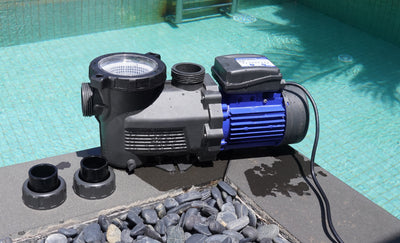How to Eliminate Mustard Algae in Your Pool for a Sparkling Swim Season
Mustard algae, a rare but stubborn intruder in pools, can cling to surfaces and resist typical chlorine treatments. Fortunately, with a few effective steps, you can eliminate mustard algae and prevent it from returning.
Understanding Mustard Algae
Unlike the slimy green algae, mustard algae are often mistaken for dirt or sand. This yellow-tinted algae typically thrives in warm climates and can be resistant to chlorine, making it challenging to remove once it settles in your pool. It also has a unique ability to latch onto items like pool toys, equipment, and even swimwear, allowing it to reintroduce itself even after you’ve cleaned your pool water.
Steps to Remove Mustard Algae from Your Pool
1. Wash All Swimwear and Accessories Algae can hide on swimsuits and pool accessories. Run your swimwear through the washing machine, using color-safe bleach if possible, to kill any hidden algae.
2. Clean Pool Toys and Equipment Use a chlorine-based cleaner to thoroughly disinfect pool toys, floats, and accessories. For any bleach-sensitive items, create a diluted solution with one part bleach to ten parts water for effective but gentle cleaning.
3. Gather Pool Maintenance Equipment Place hoses, poles, and other gear in the shallow end of your pool to sanitize them during shock treatment. This ensures everything that comes into contact with pool water is disinfected, reducing the chance of reintroducing mustard algae.
4. Brush and Vacuum the Algae Use an algae brush to scrub the pool walls and floor, loosening the algae for easier removal. Then, manually vacuum the pool, ensuring you capture as much algae as possible. Set the filter to "waste" to avoid contaminating the filtration system.
5. Test and Balance Water Chemistry Properly balanced water will help keep algae at bay. Test the pool water, aiming for a pH of 7.4–7.6 and total alkalinity between 100 and 150 ppm. Balance your pool chemistry accordingly to boost the effectiveness of chlorine and pool shock.
6. Scrub the Pool Again After balancing your pool chemistry, brush your pool walls and floor once more. This helps suspend any remaining algae particles, making it easier for the shock treatment to eliminate them.
7. Triple-Shock Your Pool Mustard algae are resilient, so add three times the normal dose of pool shock—around three pounds per 10,000 gallons of water. To maximize the effectiveness, shock your pool at dusk and run the pump continuously until the algae is fully eliminated.
8. Keep Brushing and Monitoring Regularly brush your pool over the next few days and monitor the chlorine levels. This step prevents algae from reattaching to pool surfaces, keeping it in suspension for easier removal.
9. Repeat the Shock Treatment If necessary, shock the pool again a few days after the initial treatment. Use the regular shock amount of one pound per 10,000 gallons to ensure thorough sanitization and deter any remaining algae.
10. Test the Water for Final Confirmation Once your final shock treatment is complete, test your pool water to confirm it’s free of algae. With clear, balanced water, you can remove your maintenance equipment from the pool and enjoy a refreshing swim.
Keeping Mustard Algae at Bay
Regular pool maintenance is crucial for keeping mustard algae away. Follow these tips to maintain a pristine pool:
- Maintain Balanced Water Chemistry: Regularly test and adjust pH, alkalinity, and chlorine levels to prevent algae growth.
- Run the Pump and Filter Daily: Keep the pump running 8–12 hours a day to circulate and filter the water effectively.
- Weekly Shock Treatments: Shock your pool once a week to ensure consistent sanitization.
- Clean Pool Accessories Frequently: Rinse and disinfect pool toys, floats, ladders, and covers to stop algae from clinging to them and reintroducing it to the pool.
With regular cleaning and balanced water chemistry, you’ll keep mustard algae out of your AQUASTRONG pool and enjoy a summer of hassle-free swimming!

